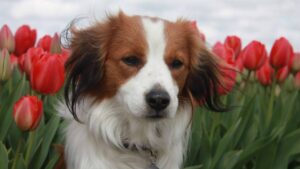
History of the Nederlandse Kooikerhondje
Discover the fascinating history of the Nederlandse Kooikerhondje, a Dutch breed with a unique role in duck trapping.
Home » Meet The Breeds » Nederlandse Kooikerhondje
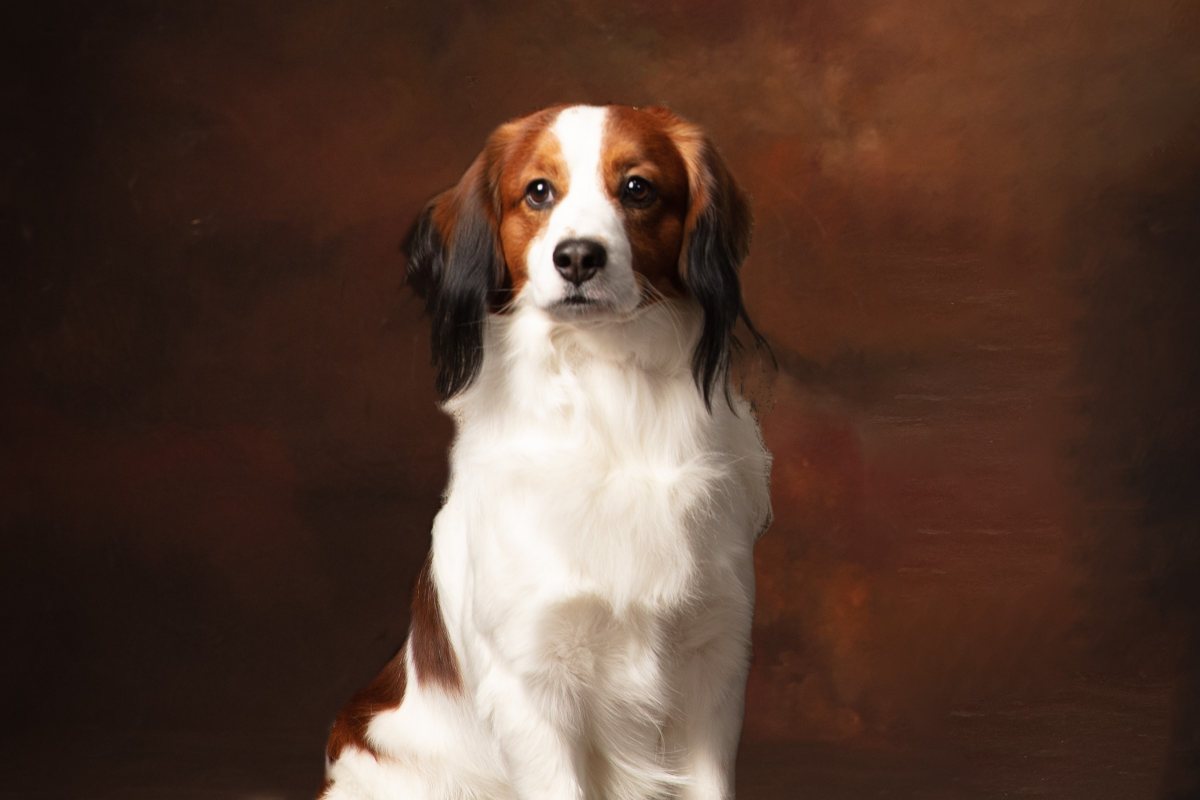
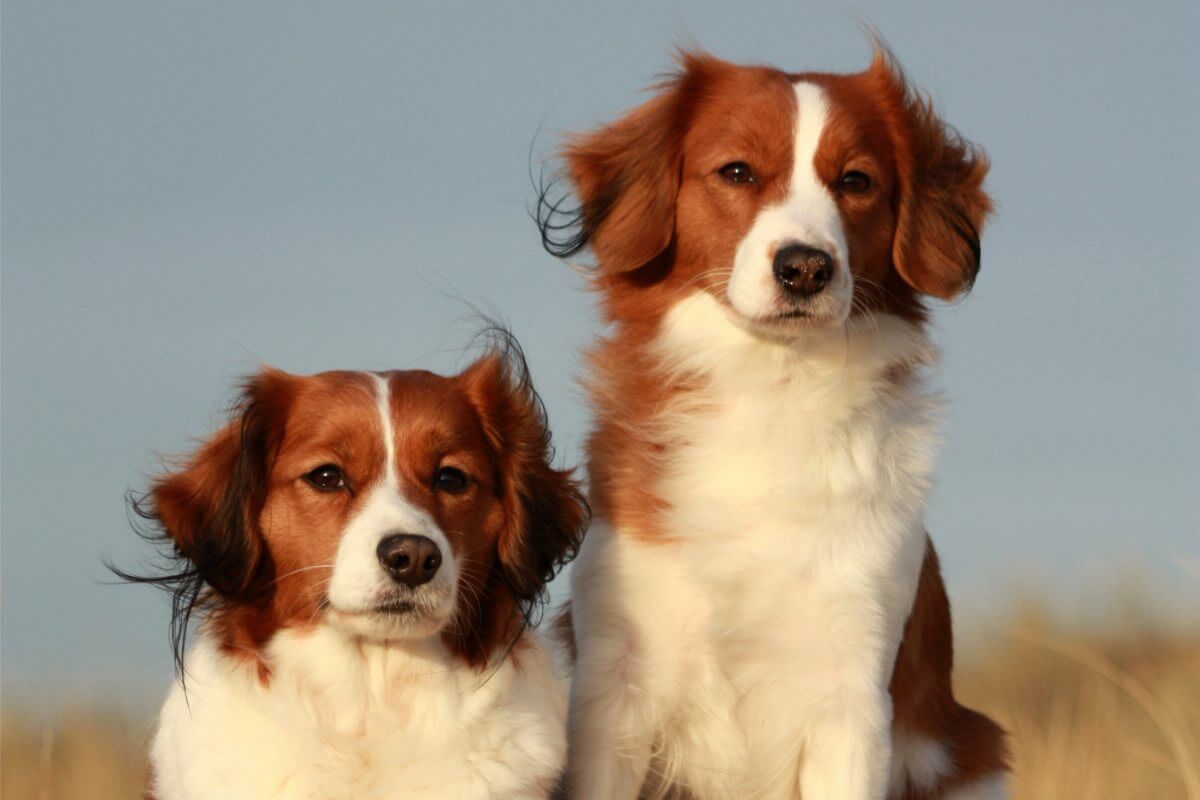
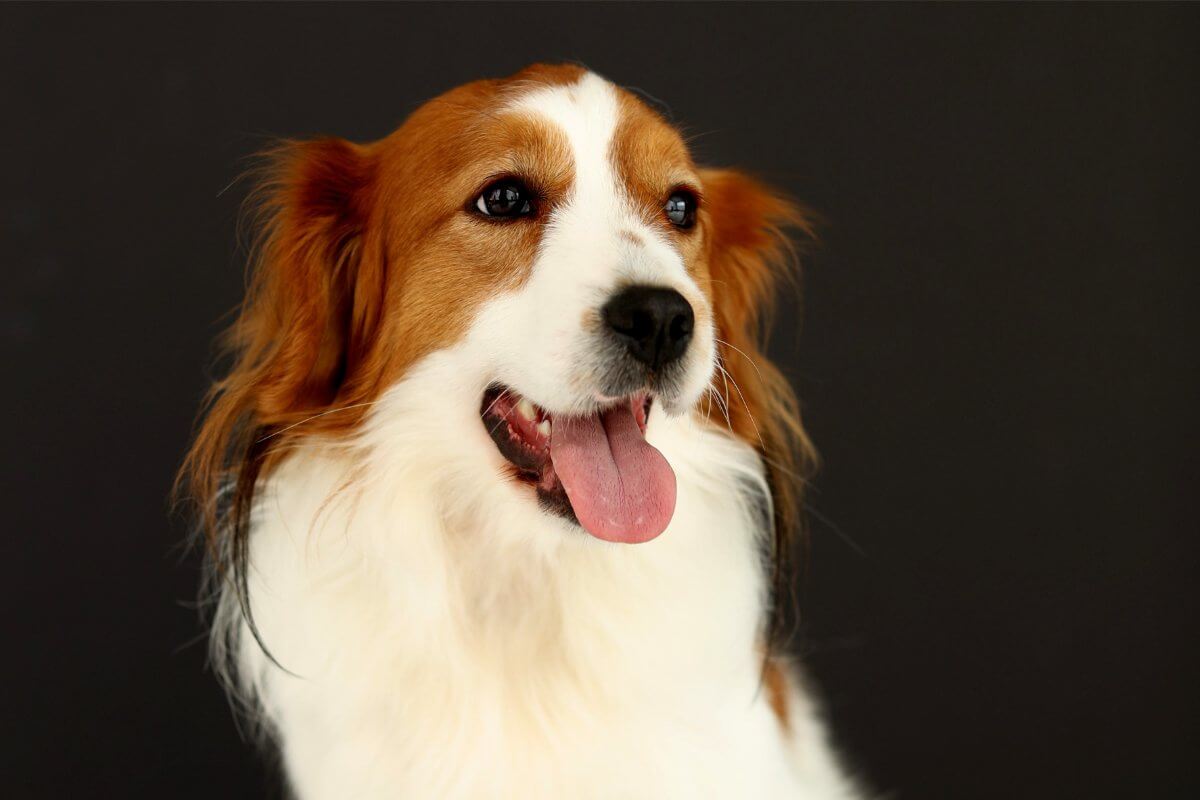
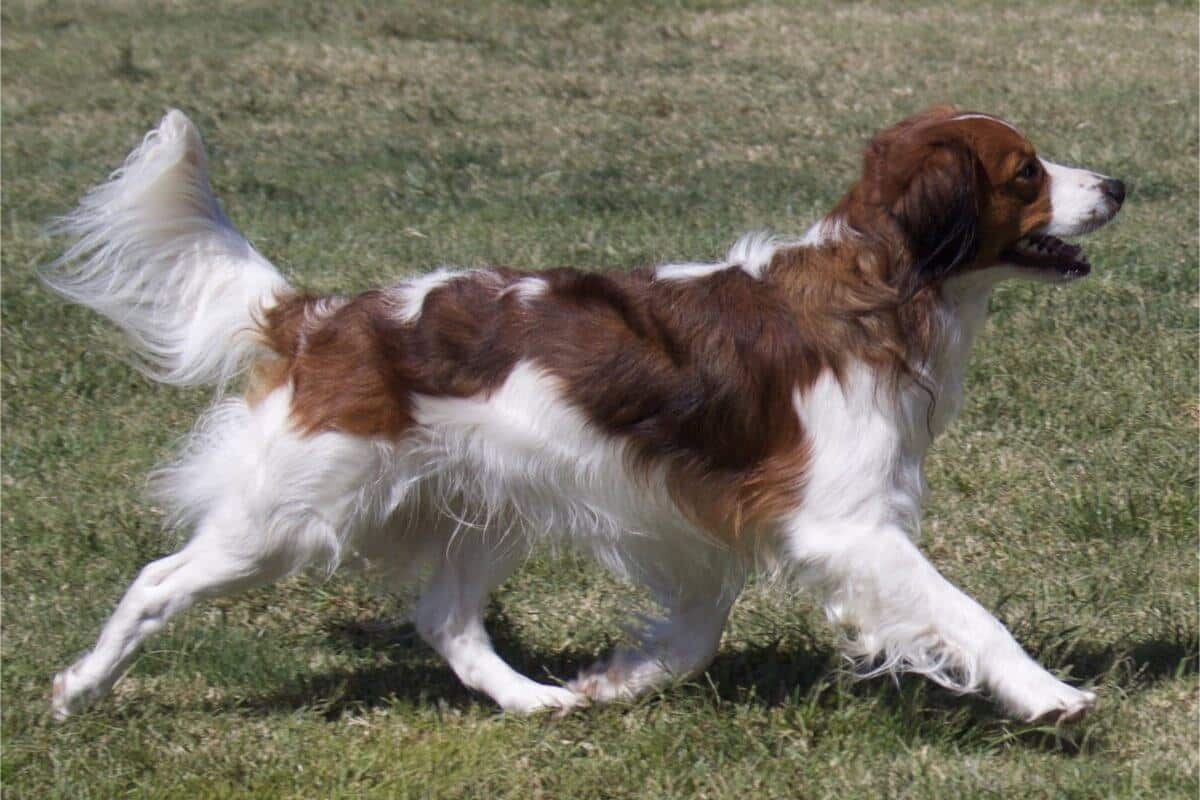
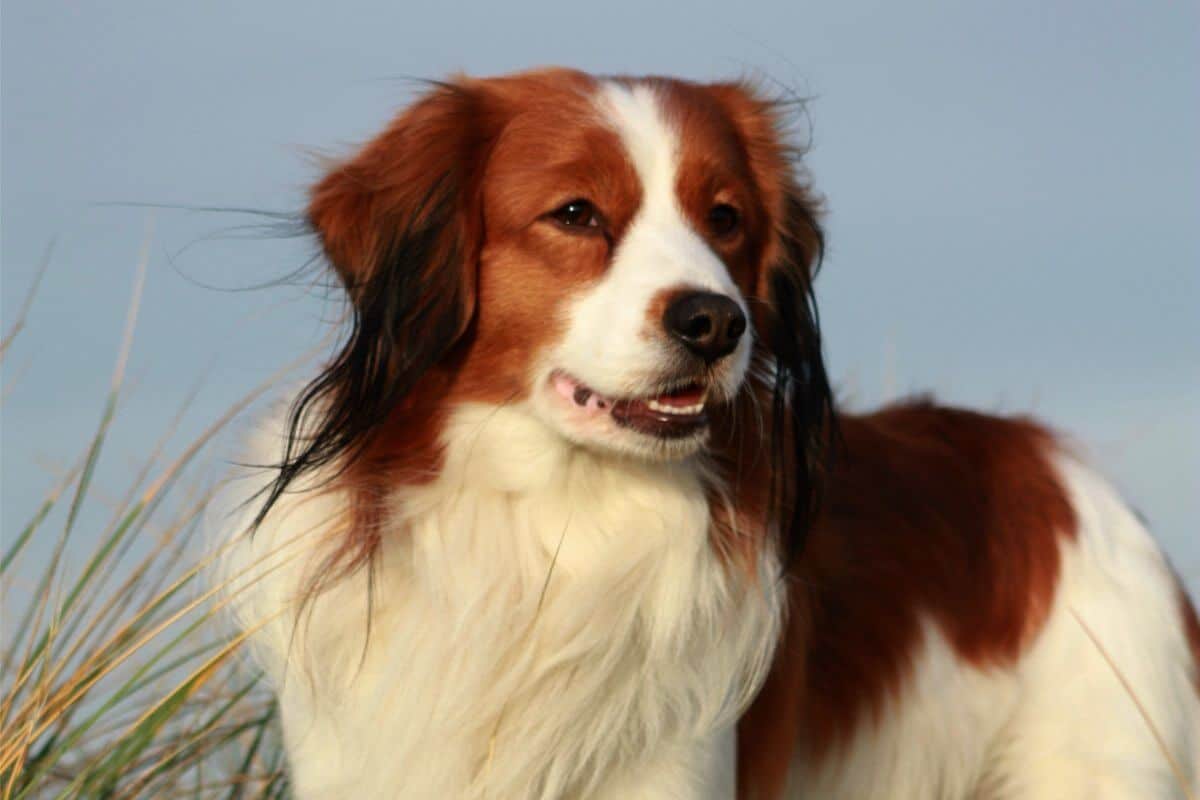
The Nederlandse Kooikerhondje, or Kooiker for short, is a small spaniel-type breed from the Netherlands known for its cheerful demeanor and striking orange-red and pure white coat. Originally bred as a duck decoy dog, the breed is now cherished for its versatility, intelligence, and devotion as a companion. Whether in the field, at home, or competing in dog sports, the Kooiker is a lively and loyal partner.
Sporting
15 – 16 inches
20 – 30 pounds
12 – 15 years
| Country of Origin | The Netherlands |
|---|---|
| Bred For | Luring Ducks into Enclosures (Tolling), Vermin Hunting |
| Known For | Faithfulness, Orange-Red and White Coat, Black “Earrings” |
| Popularity | Low |
| Temperament | Agile, Attentive, Energetic, Faithful, Lively |
| Activities | Tolling, Conformation Shows, Dog Sports |
The Nederlandse Kooikerhondje has a rich history dating back to at least the 16th century in the Netherlands, where it has been depicted in paintings by Dutch masters like Jan Steen and Rembrandt. Developed as a duck decoy dog, these small spaniels worked alongside hunters, luring ducks into traps with their wagging tails—a technique known as tolling. This method was particularly effective through the use of enclosures, or eendenkoois, from which the breed gets its name: “Kooiker” refers to the hunter managing the decoy, and “hondje” means “little dog.”
The breed’s popularity declined in the early 20th century due to the mechanization of hunting and the decline of traditional duck hunting using decoys. By the 1940s, the breed was nearly extinct, with fewer than 30 individuals remaining. Baroness van Hardenbroek van Ammerstol spearheaded efforts to save the Kooikerhondje, using surviving dogs and crossbreeding to preserve its unique traits. Her work not only revitalized the breed but also ensured its recognition as a national treasure in the Netherlands.
In 1990, the Nederlandse Kooikerhondje gained recognition from the Fédération Cynologique Internationale (FCI), solidifying its status as an official breed. It was later recognized by The Kennel Club (UK) in 2014 and the American Kennel Club (AKC) in 2018, joining the Sporting Group. While the breed remains relatively rare outside of its homeland, it is celebrated for its historical significance, working ability, and lively temperament.
The Nederlandse Kooikerhondje is a small-to-medium-sized breed, with males standing around 16 inches tall at the shoulders and females measuring 15 inches. At one year of age, both males and females should be within 1 1/2 inches of these heights, either over or under. Weight typically ranges from 20 to 30 pounds, with males tending toward the higher end of the spectrum.
The Nederlandse Kooikerhondje is slightly longer than tall, giving it a rectangular profile that enhances its agility and grace. The breed’s clean-cut build is lightweight yet sturdy, reflecting its function as a working dog capable of performing quick, precise movements. The chest reaches the elbows and the ribs are moderately sprung, allowing ample lung capacity. A slight tuck-up and a short, broad loin convey a sense of athleticism and refinement, without appearing delicate.
Texture: The Nederlandse Kooikerhondje has a medium-length silky coat that lies close to the body. It is weather-resistant, with a functional undercoat. The coat is slightly wavy or straight, with feathering on the ears, legs, and tail which add much to the breed’s rather elegant appearance. Breeching on the hind legs is fairly long, and feathered black tips on the ears (called earrings) are a desirable breed characteristic.
| Standard Color | |
|---|---|
| Orange-Red & White | y |
| Standard Marking | |
|---|---|
| Black Ear Tips | y |
A Note About Color: The Nederlandse Kooikerhondje’s coat should have distinct orange-red patches on a pure white background. The chest, belly, and most of the legs and tail should be white, with small colored spots on the legs or muzzle being acceptable. The orange-red color should dominate the head and torso, with distinct patches preferred over a mantle. Slight black intermingling, subtle ticking, and a black tail ring are permitted, but are less desirable. The head should feature a clearly visible white blaze extending to the nose, with orange-red cheeks reaching the corners of the mouth and surrounding the eyes. Coats that are black and white, or tri-color, are unacceptable in the breed.

The Nederlandse Kooikerhondje’s tail is never docked. It is of moderate length and carried level with, or slightly above, the topline when in motion. The tail doesn’t curl in a ring or circle over the back. It moves freely and is well feathered, with a white tip. This detail aids in the breed’s traditional usefulness as a duck decoy dog.
The Nederlandse Kooikerhondje is a versatile breed with plenty of charm, but potential owners should be aware of its specific needs. This active and intelligent breed thrives in homes that can provide mental and physical stimulation, consistent training, and a loving environment. Its unique combination of energy and sensitivity makes it a great companion for the right household, but a Kooiker may require extra attention in certain areas, such as socialization and training.
The Nederlandse Kooikerhondje is generally a healthy breed with a lifespan of 12 to 15 years. Responsible breeders work to minimize hereditary health issues, but regular veterinary care and preventative measures are crucial for maintaining a dog’s overall well-being.
The Nederlandse Kooikerhondje can be prone to some health issues, including:
The Nederlandse Kooikerhondje is an affectionate, intelligent, and lively breed that forms strong bonds with its family. These dogs are sensitive and eager to please, making them highly trainable, but they do require a gentle and consistent approach.
While Kooikers are friendly with their loved ones, they can be reserved around strangers, a trait that may be improved with early socialization. These good-natured dogs generally get along well with other animals and children, but they thrive best in a calm, structured environment. Their playful and active nature makes them an excellent companion for families or individuals who can dedicate time to their daily needs.
The Nederlandse Kooikerhondje benefits from a high-quality diet tailored to their age, size, and activity level. Puppies should be fed nutrient-rich puppy food in three to four daily meals to support their growth and energy needs.
Adult Kooikers typically require 1 to 2 cups of dry dog food per day, divided into two meals, depending on their activity levels and metabolism. Providing balanced nutrition and monitoring portion sizes are crucial for maintaining a healthy weight. Overfeeding can be avoided by consulting with a dog’s breeder and veterinarian.
The Nederlandse Kooikerhondje is highly trainable thanks to its intelligence and eagerness to please, but its sensitive nature requires a positive and patient training approach. Harsh methods can lead to distrust, while consistent praise, treats, and encouragement yield excellent results.
Kooikers excel in Obedience, Agility, and Trick Dog training, and their natural working instincts make them ideal for tasks like Scent Work. Early socialization is crucial to help them feel confident around new people, pets, and environments. And although they can have a moderate tendency to bark, this can be managed effectively with early training.
The Nederlandse Kooikerhondje is an active and energetic breed that requires daily exercise to stay healthy and happy. A combination of brisk walks, play sessions, and interactive games is ideal for meeting a dog’s needs.
| Energy Level | High |
|---|---|
| Exercise Requirements | 1 Hour/Day (Minimum), Daily Walks, Daily Exercise, Mental Stimulation |
Kooikers enjoy activities that challenge their intelligence and natural instincts, such as Scent Work and Agility training. While they adapt well to various living environments, they are happiest in homes that provide ample opportunities for physical and mental engagement. Regular exercise also helps to prevent boredom, which can lead to unwanted behaviors.
The Nederlandse Kooikerhondje’s medium-length coat is relatively low-maintenance but benefits from regular brushing to prevent tangles and keep it looking clean. Weekly brushing is typically sufficient, with more frequent attention given during shedding seasons.
| Coat Type | Soft, Medium Length, Wavy or Straight, Close Lying |
|---|---|
| Grooming Requirements | Weekly Brushing, Occasional Bathing, Routine Ear Cleaning, Periodic Nail Trimming, Regular Tooth Brushing |
The coat of the Kooiker naturally repels dirt, so bathing is only necessary occasionally or when the dog becomes particularly dirty. Routine grooming also includes trimming nails, cleaning ears, and maintaining good dental hygiene with regular brushing. These practices help to keep the Kooiker comfortable and in overall good health.
The Nederlandse Kooikerhondje is adaptable and can thrive in a variety of living situations, provided it receives enough exercise and mental stimulation. These faithful and easygoing companions are best suited to homes where they can be an integral part of family life.
The Kooiker tolerates moderate climates well, though care should be taken in extreme cold or heat. The breed’s affectionate and playful nature makes these dogs excellent companions, but they are happiest in environments where their cheerful character and zest for working can be appreciated.
Nederlandse Kooikerhondje puppies are full of energy and curiosity, bringing joy to any home. The first few months of life is a critical time for shaping their temperament and behavior, so providing consistent training, socialization, and care is essential. These intelligent and sensitive puppies thrive in structured environments where their mental, emotional, and physical needs can be met.
Caring for a Nederlandse Kooikerhondje puppy starts with establishing a routine that includes proper nutrition, frequent socialization, and positive reinforcement training. The puppy should be fed high-quality puppy food divided into three to four meals daily to support its growth and energy needs.
Socialization should begin early, exposing the puppy to various people, pets, and environments that will help to build confidence and reduce fearfulness. Training sessions should be short, engaging, and reward-based, as Kooikers respond best to positive reinforcement. Crate training is highly recommended for housebreaking and providing a safe, comfortable space for resting and sleeping.
Grooming should start during puppyhood, with regular brushing to get the Kooiker puppy accustomed to being handled and to maintain the coat. Nail trimming, ear cleaning, and dental care should also be introduced gradually to cultivate a lifetime of good grooming habits. Regular veterinary check-ups and vaccinations are crucial to keeping the puppy healthy and ensuring proper development.
The Nederlandse Kooikerhondje is recognized by the world’s leading registries and kennel organizations, which categorize the breed into a specific Group based on its unique characteristics. This breed is recognized worldwide under the following Group designations:
| Organization | Group Designation |
|---|---|
| AKC (American Kennel Club) | Sporting |
| UKC (United Kennel Club) | Gun Dog |
| CKC (Canadian Kennel Club) | Not Recognized |
| ANKC (Australian National Kennel Council) | Not Recognized |
| RKC (The Royal Kennel Club) | Gundog |
| FCI (Fédération Cynologique Internationale) | Group 8: Retrievers, Flushing Dogs, Water Dogs; Section 2: Flushing Dogs |
The ideal Nederlandse Kooikerhondje is described by a Breed Standard that is approved by each of the world’s leading registries and kennel organizations. The Breed Standards for this breed may be found in the following links:
| Organization | Breed Standard |
|---|---|
| American Kennel Club | AKC Nederlandse Kooikerhondje Breed Standard |
| United Kennel Club | UKC Nederlandse Kooikerhondje Breed Standard |
| Canadian Kennel Club | CKC Not Recognized |
| Australian National Kennel Council | ANKC Not Recognized |
| The Royal Kennel Club | RKC Nederlandse Kooikerhondje Breed Standard |
| Fédération Cynologique Internationale | FCI Nederlandse Kooikerhondje Breed Standard |
Rescue groups play a crucial role in helping Nederlandse Kooikerhondjes in need find loving, permanent homes. These organizations are dedicated to the welfare of the breed, focusing on rehoming, education, and support for new owners.
Yes, Nederlandse Kooikerhondjes shed moderately, with heavier shedding during seasonal changes. Regular brushing helps to manage the coat and reduces loose hair around the home.
No, Nederlandse Kooikerhondjes are not considered hypoallergenic. While their coat sheds less than some breeds, they still produce dander, which may trigger allergies in sensitive individuals.
Nederlandse Kooikerhondjes typically live between 12 and 15 years. With proper care, regular veterinary visits, and a healthy lifestyle, they can enjoy a long and active life.
Yes, Nederlandse Kooikerhondjes are excellent family dogs due to their affectionate and playful nature. They bond well with children, and with proper socialization they adapt easily to most family dynamics.
Nederlandse Kooikerhondjes have a moderate tendency to bark, often using their voice to alert their owners of strangers or unusual activity. Early training can help to manage any excessive barking.

Discover the fascinating history of the Nederlandse Kooikerhondje, a Dutch breed with a unique role in duck trapping.
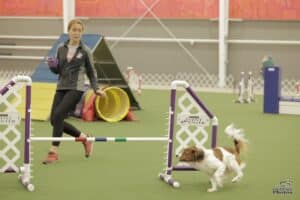
Interview with Liz Barshack, handler of “Senna,” the 2022 AKC Agility Invitational Winner in the 16″ height category.

Show Grooming a Kooiker | Before jumping into the Nederlandse Kooikerhondje grooming world, we should mention our background in grooming.

Doug Johnson of Clussexx Kennel breeds top Spaniels and Kooikers with a focus on health, type, and predictability since 1984.
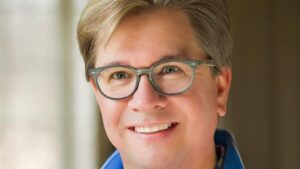
Doug Johnson on 40 years of breeding and judging English Toy, Clumber, Sussex, Welsh Springer Spaniels, and Kooikerhondje.
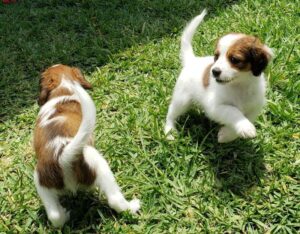
Kimberley Layman is the breeder behind Dreamcatcher Kooikerhondjes. Read about the kennel’s beginnings, the sires, the dams, and more!

Ann Knoop-Siderius is the breeder behind Kooikerhondjes van den Iserman Hoeve. Read about the kennel’s beginnings, the champions, and more!

Sheryl Fuller is the breeder behind Waterbound Kooikerhondje. Read about the kennel’s beginnings, the sires, the dams, the puppies, and more!
The best way to ensure a long and happy relationship with a purebred dog is to purchase one from a responsible breeder. Not sure where to begin?
Contact the National Parent Club’s Breeder Referral Program, which is listed on the AKC Breeder Referral Contacts page.
